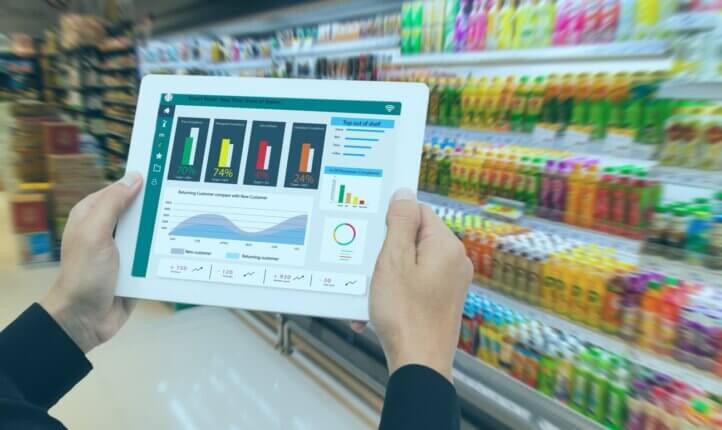5 Reasons to Love Data

Data it’s a “thing.”
It’s what we base decisions on, and it’s how we make informed decisions. But data is nothing without analysis. In fact, data is only the beginning. It is how we apply, interpret, and use data that’s key.
Data is information that drives knowledge and provides insight.

In this blog we will share 5 reasons to love data and how you can use the insight data provides in practical ways to drive optimal returns in your field marketing campaigns.
After all data is just a thing. Unless you know how to use it wisely.
1. Fishing where the fish are – lets talk about using data led targeting.
Data helps identify where to target field sales campaigns to optimise return on investment. By collecting and merging multiple datasets across all retailers, nationwide, you create a 360-degree view on what each store “looks like”. This can help identify store format, size and spend – to name but a few! Overlay this with instore attribute data, customer demographics and/or local amenities and other attractors or detractors around each store, and you start to see where to focus activity to optimise sales. For example, as with the Pareto Principle, you may only need to launch a key promotion in a selection of outlets to drive the maximum return verses coverage of the full estate. Or you might want to launch an NPD for an ‘on the go’ snack only into outlets that are close to commuter hotspots, so you target high footfall zones with the right consumer demographic for your brand. In short, data provides insight, and from this you can build a bespoke call file for your individual brand needs. Data ensures we “fish where the fish are” and this in turn optimises your return on investment but focusing activity into the right stores, at the right time.
2. It’s a fact, not an opinion – transparent measures of success.
Without data we’re just a person with an opinion. Data makes things less subjective. It is hard to argue with. When we apply statistics, trend analysis or even sales uplift percentages to our stories we create a sense of logic and credibility. Data allows us to track the effectiveness of actions as qualifiable outputs. By collecting and analysing data, we can measure the results of our efforts and understand what actions drive the greatest return. We apply this in every aspect of our field sales campaigns, from looking at where to implement activity, what actions drive the greatest sales uplift and as a final measure of success; Return on investment. By collecting data we gain invaluable insight into instore opportunities, issues, compliance, availability and inventory levels as well as sales and retail tends. We can share back actionable insight and a true measure of success, based on hard data and the analysis thereof, which enables brand partners to make informed decisions and to act quickly, maximising profits. Transparent and trusted.
3. Personalisation – optimising how you influence with data.
Imagine telling a story to a retailer about the sales uplift you created for a new to market product, when trying to influence them to stock a well-established brand aimed at a different customer and channel. Entertaining at best, not relevant and highly confusing at worse. In short, data is everywhere, and it can mean different things to different people.
Retailers are increasingly using data to make informed decisions, from which products lines to keep in stock or ways to leverage data to improve their operations, reduce waste, and increase profitability. Retailers want and need brands and field teams to keep them informed, so they can make the right decisions. Data is most powerful when it is relevant and specific and even recognised as personal. For instance, our field teams quickly build visual case studies whilst in outlet using real data from the instore. So, in minutes they can engage retailers with real life, relevant – data driven – examples of how implementing a promotion, or unlocking incremental space, could drive a measurable uplift in sales. Bringing data to life in relevant, engaging, and powerful testimonials optimises conversion. Helping retailers to make informed decisions about actions that will make a difference for them.

4. Better decision making – insight that drives action!
Using intervention data, our field teams can make more informed decisions about how to allocate their time and resources. They can prioritise their activities based on the most important opportunities, helping them to achieve better results for our clients. By understanding which actions and interventions drive the greatest return, the field team know what to focus on. If the data changes, actions change. Data drives the continuous review of where, when, who and what to focus on. It takes the guesswork out of what skus to fix first or what actions to implement next. It also aids retailers and brands to see where to invest or reinvest ongoing. Knowing what outlets, POS types or which stores need greater support, ensures you can improve the overall performance of each campaign as well as having a finger on the pulse of what individual interventions or campaigns drive the most significant returns.
5. Omnichannel retailing – a holistic view.
The retail landscape is changing rapidly, and both brands and retailers alike are adopting an omnichannel approach, where customers can shop through multiple channels, including online, in-store, and through mobile devices. This means that brands now need multiple sets of data to ensure they can provide a seamless shopping experience across all channels. Whilst many brands and significant budget spends are being put to influencing online, part of any brands marketing mix should be instore activity. Why? Because according to Statista, 14.5% of total retail sales were e-commerce in 2022, while the larger majority were from brick-and-mortar retail stores, showing instore activity is still key to driving brand sales. Understanding how consumers shop the shelves is key to influencing the shoppers decision making. Gaining this insight allows use of predictive analytics (which uses data to identify patterns and trends to anticipate customer behaviour) so brands can make informed decisions on how to disrupt the shoppers journey.
The use of field sales teams provides a measurable solution to collecting and applying data led actions, at the point of purchase. Field marketing activities can be implemented as a dedicated service or as a flexible short term campaign, depending on the brands budget or brief. In every activity we run we use the insight data provides to focus the right people, into the right stores at the right time, doing the right thing to achieve incremental sales as a result of this insight and intervention.

In conclusion, we don’t collect data simply because we love collecting data, but because we love the actionable insight that comes from it.
Data is more important than ever in retail in 2023 because with the greater reliance on data by the retailers and automation in the supply chain process, coinciding with the rationalisation of staff on the shop floor, brands and field teams are required to address issues and opportunities, such as book stock errors, out of stocks, promotional compliance etc. that are now common place.
If you are a brand owner in need of support, please contact Field Sales Solutions today.
Contact Us | Field Sales Solutions
Subscribe here
To keep up to date with all our latest news, views and information on our field sales solutions please subscribe.
